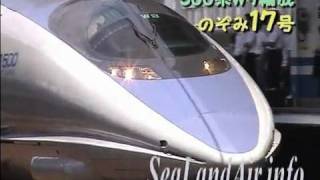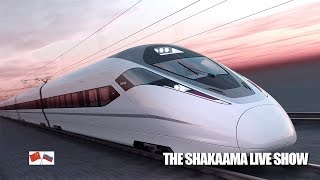Thursday, 25 December, 2025г.
















Где искать: по сайтам Запорожской области, статьи, видео ролики
пример: покупка автомобиля в Запорожье
How Much of the Chinese Bullet Train Is "Made in China"?
Follow us on TWITTER: http://twitter.com/cnforbiddennews
Like us on FACEBOOK: http://www.facebook.com/chinaforbiddennews
When China decided to adapt high-speed bullet train technology in 2004, the highest train speed it could reach was 160 km/h (99.41 mph). In seven years, the bullet train reached its maximum running speed of 380km/h (236.12 mph. It is planned to reach this speed along the Beijing-Shanghai route. However, due to frequent bullet train and subway system accidents, 80% of China's railway projects are proceeding at a slower pace. Experts say that these accidents seem to occur due to technical reasons, but they're actually due to policy issues.
On September 8, 2009, former vice engineer of the Ministry of Railway, Zhang Shuguang, said, "In the past 6 years, we have completely adapted the nine-core technologies of bullet trains, and have reached complete success with this type of innovation."
However, the Wenzhou bullet train accident occurred in July of this year, killing 40 and injuring 200, according to official reports.
The train accident raised serious questions about Chinese bullet trains, two of them being: "Did China really obtain in five years what the rest of the world spent 40 years trying to obtain with regards to bullet train technology?" and "Did the Chinese really create the one and only bullet train which was later to become one of the four most advanced technologies in the world?"
Former Chinese subway engineer, Mr. Zhan pointed out that since China first imported its bullet train technology in 2004, giving birth to the first "independent intellectual property rights" of high-speed trains, the basic core skill of the technology was never fully adapted, as it was always foreign experts who would go to the factory to make adjustments. However, the body of the train, the signal system, the automatic control system, and core parts, were all foreign made. Chinese engineers were also not versed in the operation of the control coordination system, causing frequent difficulties.
Mr. Zhan: "Core parts such as the automation system and important parts of Steering system as well as components in the electric system, were actually all imported. Things are just being fabricated in the mainland and later calibrated."
Mr. Zhan revealed the real behind-the-scenes details of China' bullet train development. He said that before 2004, China tried five times to increase train speed, then realized that self-developed technology cannot meet the requirement, resulting in frequent accidents which endangered the safety of motorcycle traffic. Therefore, these projects were terminated. After that, technical cooperation was deemed most important, moving towards "import, absorption, and localization."
Mr. Zhan: "Based on the current Chinese railway system, increasing speeds to 160km/h (99.41 mph) ultimately failed. However, over the three-year period following 2004, claims were made suggesting that high-speed train technology had been fully grasped. That is impossible!"
Mr. Zhan believes that Chinese leaders seek achievements to show off their political worth. They have no patience to wait for long R&D cycles to mature, therefore, technical knowledge doesn't accrue. On top of that, China was closed off to the world after 1949, resulting in poor technology fundamentals, plus, effort was not spent on R&D, but rather on the project itself.
NTD reporters Liang Xin, Song Feng and Bo Ni
《神韵》2011世界巡演新亮点
http://www.ShenYunPerformingArts.org/
Теги:
maximum running speed high-speed bullet train technology technical reasons policy issues Wenzhou accident occurred independent intellectual property rights projects were terminated fully grasped
Похожие видео
Мой аккаунт


 У вашего броузера проблема в совместимости с HTML5
У вашего броузера проблема в совместимости с HTML5
![[Japan] 500 Series Shinkansen Technology [High-speed Train]](/images/mq/a/01/37F36DS84rZ_A0.jpg)

